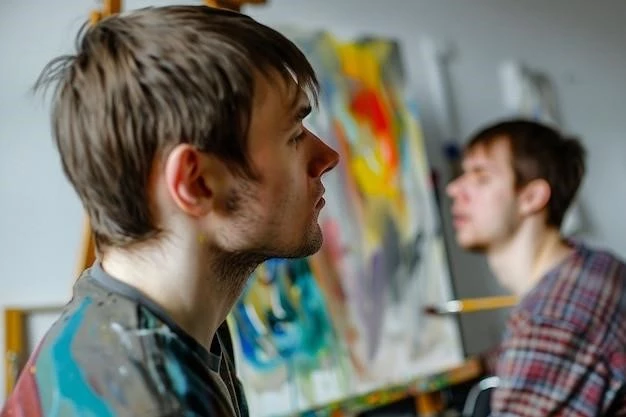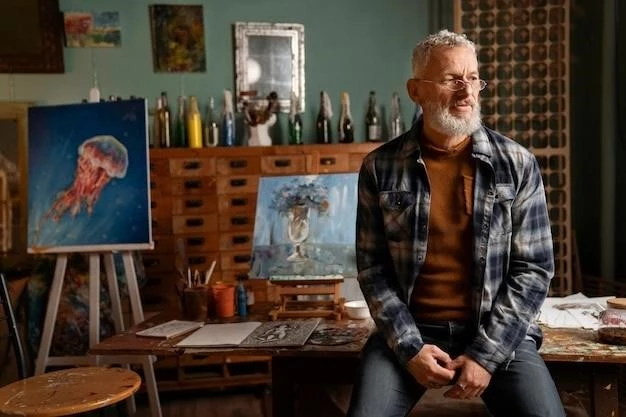The 20th century was a time of immense change and upheaval‚ and art reflected these tumultuous times. It was a period that saw the birth of modern art‚ with artists breaking free from the constraints of tradition and exploring new ways of seeing and representing the world. From the revolutionary Cubism of Picasso to the introspective Expressionism of Rothko‚ the 20th century produced some of the most iconic and influential artists in history. These artists not only redefined art but also shaped the cultural landscape and continue to inspire generations of artists today.
The Rise of Modernism
The dawn of the 20th century brought with it a wave of artistic movements that collectively came to define modern art. These movements were united in their rejection of the traditional academic styles that had dominated for centuries. Instead‚ they embraced experimentation‚ innovation‚ and a desire to capture the rapidly changing world around them.
1. Cubism: Fragmenting Reality
Emerging in the early 1900s‚ Cubism‚ spearheaded by Pablo Picasso and Georges Braque‚ revolutionized the way we perceive form and space in art. Gone were the traditional rules of perspective and realistic representation. Instead‚ objects were broken down into geometric shapes‚ analyzed‚ and reassembled in abstract forms on the canvas. This fragmentation of reality challenged viewers to see the world from multiple perspectives simultaneously. Picasso’s groundbreaking painting‚ Les Demoiselles d’Avignon (1907)‚ stands as a testament to Cubism’s radical departure from artistic norms.
2. Fauvism: Unleashing Color
Around the same time that Cubism was shaking up the art world‚ Fauvism burst onto the scene with its bold and expressive use of color. Led by Henri Matisse‚ the Fauves‚ meaning “wild beasts” in French‚ abandoned traditional color palettes and instead embraced vibrant‚ non-naturalistic hues to convey emotion and energy. Matisse’s iconic work‚ The Joy of Life (1905-1906)‚ with its riotous colors and simplified forms‚ exemplifies the Fauvist spirit of liberation and sensory exploration.
3. Surrealism: Tapping into the Subconscious
Emerging in the aftermath of World War I‚ Surrealism delved into the depths of the subconscious mind‚ drawing inspiration from the theories of Sigmund Freud. Artists like Salvador Dalí‚ René Magritte‚ and Joan Miró explored the world of dreams‚ fantasies‚ and the irrational‚ creating bizarre and often unsettling imagery. Dalí’s melting clocks in The Persistence of Memory (1931) remain an enduring symbol of Surrealism’s exploration of the fluid nature of time and perception.
Abstract Expressionism: The Triumph of the Individual
Following World War II‚ the United States emerged as a new center of artistic energy‚ and Abstract Expressionism became the defining movement of this era. Rejecting both figuration and traditional composition‚ these artists embraced spontaneous gestures and an intuitive approach to artmaking.
1. Jackson Pollock: Action Painting and the Unconscious
Jackson Pollock revolutionized painting with his “action painting” technique‚ dripping and splashing paint onto canvases laid out on the floor. His large-scale works‚ such as Number 1‚ 1950 (Lavender Mist)‚ are characterized by their dynamic energy‚ swirling forms‚ and a sense of the artist’s physical engagement with the canvas. Pollock’s work tapped into the raw‚ unfiltered emotions of the subconscious‚ reflecting the anxieties and uncertainties of the post-war period.
2. Mark Rothko: Color Field Painting and Emotional Resonance
In contrast to Pollock’s dynamic energy‚ Mark Rothko’s Color Field paintings evoke a sense of quiet contemplation. His signature style involved large‚ rectangular blocks of color floating on canvases‚ inviting viewers to lose themselves in the subtle variations of hue and tone. Rothko’s work aimed to elicit profound emotional responses through the power of pure color‚ creating meditative spaces for reflection and introspection.

Pop Art: Challenging the Status Quo
Emerging in the 1950s and 1960s‚ Pop Art blurred the lines between high art and popular culture‚ challenging the traditional hierarchies of the art world. Drawing inspiration from advertising‚ comic books‚ and everyday objects‚ Pop artists celebrated the mundane and questioned the very definition of art.
1. Andy Warhol: The Iconography of Mass Culture
No artist embodies the spirit of Pop Art quite like Andy Warhol. His iconic silkscreen prints of celebrities like Marilyn Monroe and Elvis Presley‚ as well as everyday objects like Campbell’s soup cans‚ transformed familiar images into mass-produced icons. Warhol’s work questioned the nature of celebrity‚ consumerism‚ and the role of art in a media-saturated society.
2. Roy Lichtenstein: Comic Books and Ben-Day Dots
Roy Lichtenstein’s bold‚ graphic paintings drew inspiration from the world of comic books. Using Ben-Day dots‚ a printing technique that creates the illusion of shading‚ Lichtenstein transformed mass-produced imagery into monumental works of art. His paintings‚ such as Whaam! (1963)‚ capture the energy and dynamism of comic book narratives while simultaneously commenting on the pervasive influence of popular culture.

The Legacy of the 20th Century Masters
The artists of the 20th century left an indelible mark on the art world and beyond. They broke down barriers‚ challenged conventions‚ and expanded the very definition of art. Their innovations in form‚ style‚ and concept continue to inspire and influence artists today. From the streets of New York City to the galleries of Paris‚ the legacy of these 20th-century masters is evident in the ever-evolving landscape of contemporary art.










